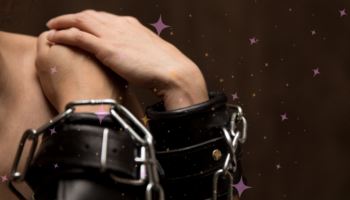Burlesque is a general term which describes any literary, dramatic, or musical work which satirizes serious works or its subjects. It comes from the Italian word burla which translates to joke, ridicule, or mockery.
From the 1860s the term came to refer to a type of adult entertainment popular in the Western world, but especially in the United States. These shows are often seen as a relative of vaudeville performances although burlesque tends to be much more risque. Sexually-charged comedy and female striptease are components of these modern burlesque performances.
From the 1860s the term came to refer to a type of adult entertainment popular in the Western world, but especially in the United States. These shows are often seen as a relative of vaudeville performances although burlesque tends to be much more risque. Sexually-charged comedy and female striptease are components of these modern burlesque performances.
More About Burlesque
Burlesque originated in Great Britain during the 1840s and 1850s. These original burlesque shows were satirical plays and musical reviews performed by female casts. The performances, which were popular with Europe’s upper class, mocked low-brow society and entertainment genres like opera, ballet, and Shakespearean drama.
The art of striptease seen in modern burlesque shows was added much later, although burlesque always featured attractive women who would wear skimpy costumes designed to titillate their audience. From the 1920s the female performers began to show more skin on stage. As a result, many of the players were arrested for indecency. Authorities began to crack down on burlesque houses until the 1940s when the artform’s ability to entertain servicemen was recognized.
Burlesque was immensely popular during World War II, but it fell out of favor until the 1990s. It made a comeback thanks largely to well-known burlesque artists like Dita von Teese. Modern burlesque shows usually feature performances from comedians, musicians, dancers, and striptease artists overseen by a master of ceremonies.
The striptease artists who perform burlesque tend to differentiate themselves from traditional strippers. While strippers look to arouse the members of the audience, burlesque performers look to entertain and illicit laughter. The performance of a striptease artist in a burlesque show is more playful. The burlesque performer may also remove less clothing, and dance in a less suggestive fashion. Unlike traditional strip shows, which are largely frequented by heterosexual males, burlesque performances are very popular amongst women and homosexual men.
The art of striptease seen in modern burlesque shows was added much later, although burlesque always featured attractive women who would wear skimpy costumes designed to titillate their audience. From the 1920s the female performers began to show more skin on stage. As a result, many of the players were arrested for indecency. Authorities began to crack down on burlesque houses until the 1940s when the artform’s ability to entertain servicemen was recognized.
Burlesque was immensely popular during World War II, but it fell out of favor until the 1990s. It made a comeback thanks largely to well-known burlesque artists like Dita von Teese. Modern burlesque shows usually feature performances from comedians, musicians, dancers, and striptease artists overseen by a master of ceremonies.
The striptease artists who perform burlesque tend to differentiate themselves from traditional strippers. While strippers look to arouse the members of the audience, burlesque performers look to entertain and illicit laughter. The performance of a striptease artist in a burlesque show is more playful. The burlesque performer may also remove less clothing, and dance in a less suggestive fashion. Unlike traditional strip shows, which are largely frequented by heterosexual males, burlesque performances are very popular amongst women and homosexual men.



